King Charles: First official portrait since coronation is unveiled, painted by Jonathan Yeo
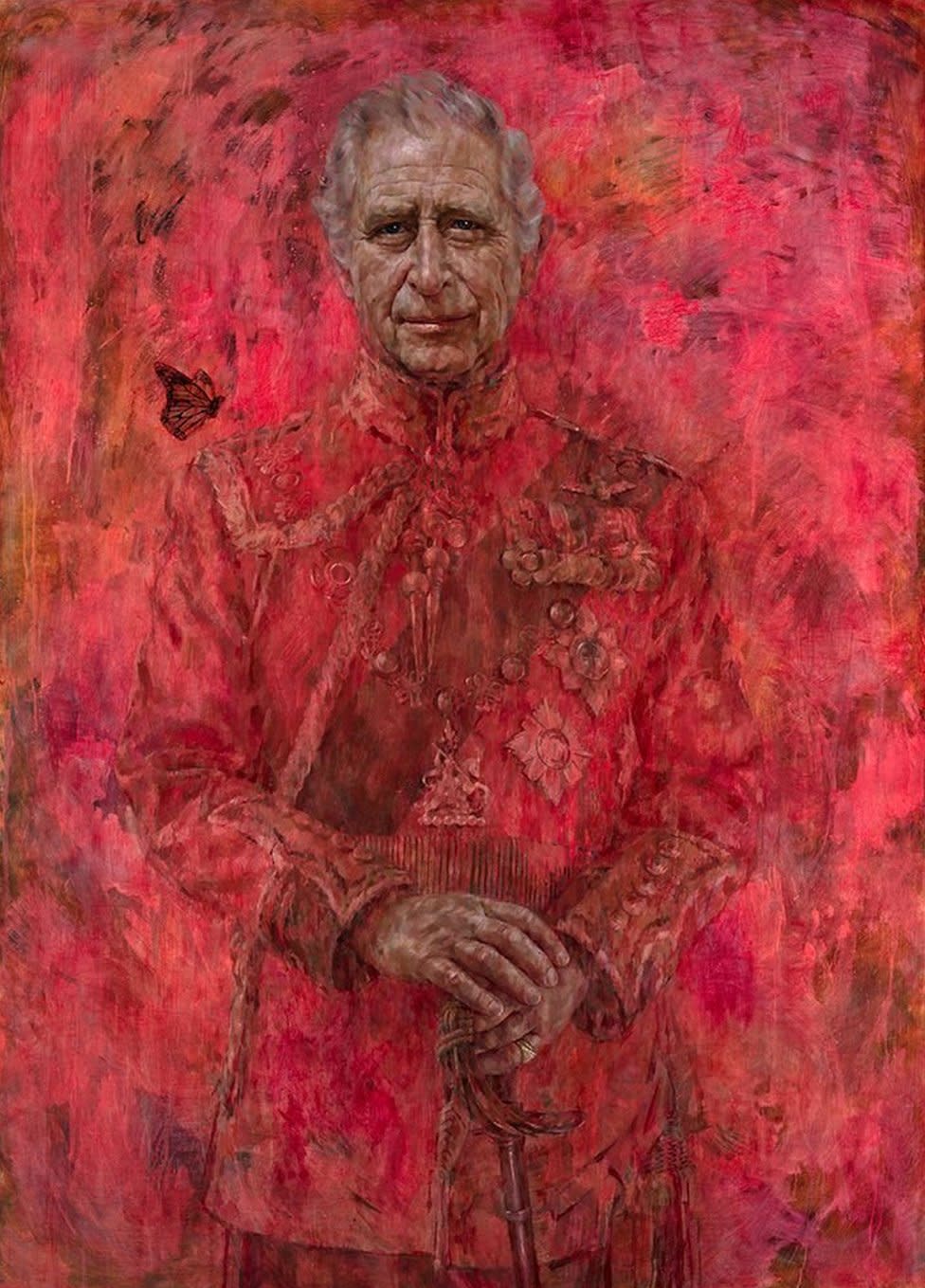
- Oops!Something went wrong.Please try again later.
- Oops!Something went wrong.Please try again later.
- Oops!Something went wrong.Please try again later.
The first official painted portrait of King Charles III since his coronation has been unveiled at Buckingham Palace.
The vast oil on canvas shows a larger-than-life King Charles in the uniform of the Welsh Guards.
The vivid red work, measuring about 8ft 6in by 6ft 6in, is by Jonathan Yeo, who has also painted Tony Blair, Sir David Attenborough and Malala Yousafzai.
Queen Camilla is said to have looked at the painting and told Yeo: "Yes, you've got him."
In the new portrait, the King is depicted, sword in hand, with a butterfly landing on his shoulder.
Unveilings are always a little nerve-wracking, both for the sitter and the artist, but particularly when one of them is a King.
Yeo jokes: "If this was seen as treasonous, I could literally pay for it with my head, which would be an appropriate way for a portrait painter to die - to have their head removed!"
In reality, Yeo isn't going to lose his head of course - no executions for a badly received portrait of a monarch, in modern times anyway.
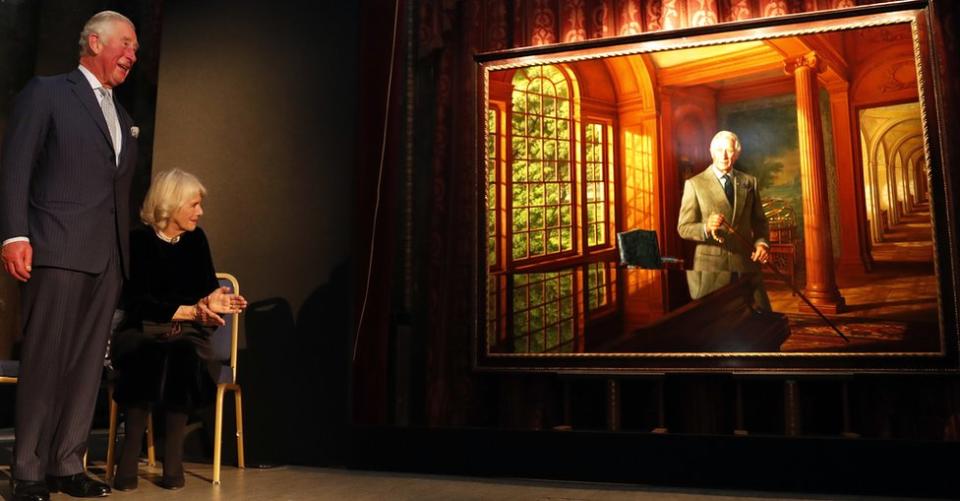
Fortunately, he has also already had a nod of approval from a key royal figure.
The Queen dropped in during the final sitting and said the artist had captured the King well. Yeo says the best judge of a portrait is someone who knows your sitter really well because they have instant recognition of whether it feels familiar.
The King also got a glimpse of it, says Yeo, in its "half-done state… He was initially mildly surprised by the strong colour but otherwise he seemed to be smiling approvingly".
It is a vibrant painting.
The King was made Regimental Colonel in the Welsh Guards in 1975. In the picture, the red of the uniform fades into the red background, bringing the King's face into even more prominence.
Yeo says he wanted the painting to be distinctive and a break with the past. He was aiming for something personal.
"My interest is really in figuring out who someone is and trying to get that on a canvas."
Coronation coins: First ones to show King Charles wearing crown
What does King Charles do and how has cancer changed his duties?
Yeo decided to use some of the traditions of royal portraiture - the military outfit, the sword - but aimed to achieve something more modern, particularly with the deep colour and the butterfly.
He says he's referencing the tradition of official royal portraits but suggesting that's something "from the past and what's interesting about them is something a bit different from that".
"In history of art, the butterfly symbolises metamorphosis and rebirth," he explains, fitting for a portrait being painted of a monarch who has recently ascended to the throne.
The butterfly is also a reference to the King's long held interest in the environment, causes "he has championed most of his life and certainly long before they became a mainstream conversation".
Yeo says it was Charles' idea after they talked about the opportunity they had to tell a story with the portrait.
"I said, when schoolchildren are looking at this in 200 years and they're looking at the who's who of the monarchs, what clues can you give them?
"He said 'what about a butterfly landing on my shoulder?'".
Yeo began the portrait when Charles was still Prince of Wales, with the first sitting at Highgrove in June 2021.
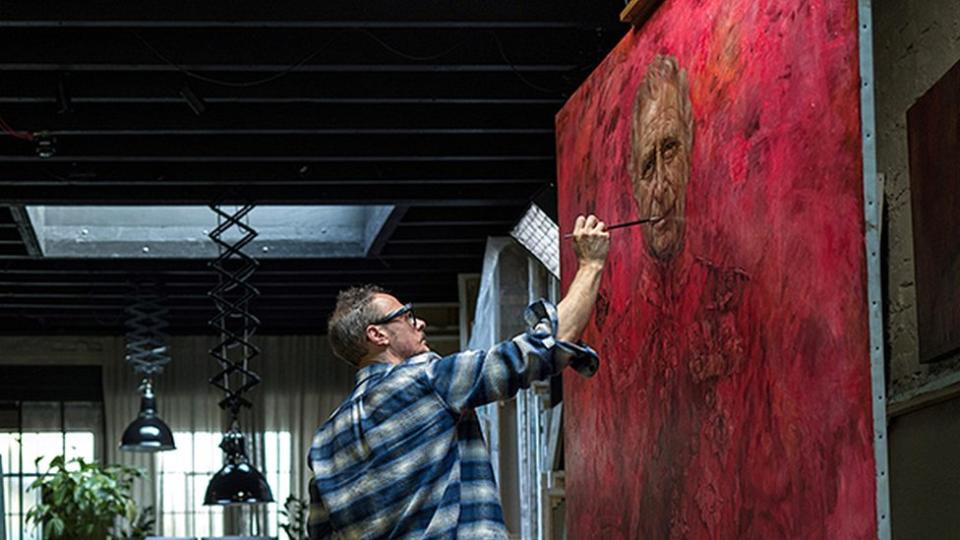
The King sat four times in all, for about an hour at a time, with the final sitting at Clarence House in November 2023. Did the artist notice any obvious change in the man after he became King?
Yeo says he's spotted "a physical change" in politicians he's painted in the past. "They physically look and feel different when they're in high office or out of it."
Yeo adds the King "had already been gaining presence and stature by the time I started it, and it went up a level again when he became King, as you'd expect".
The sittings ended before the King's cancer was diagnosed. He had a lot going on, says Yeo, with an upcoming speech at the COP Summit, but "didn't seem like someone who was physically exhausted".
He was "in good spirits", the painter adds.
King Charles posed in his full Welsh Guards uniform and had to stand leaning on his sword for around 40 minutes each time.
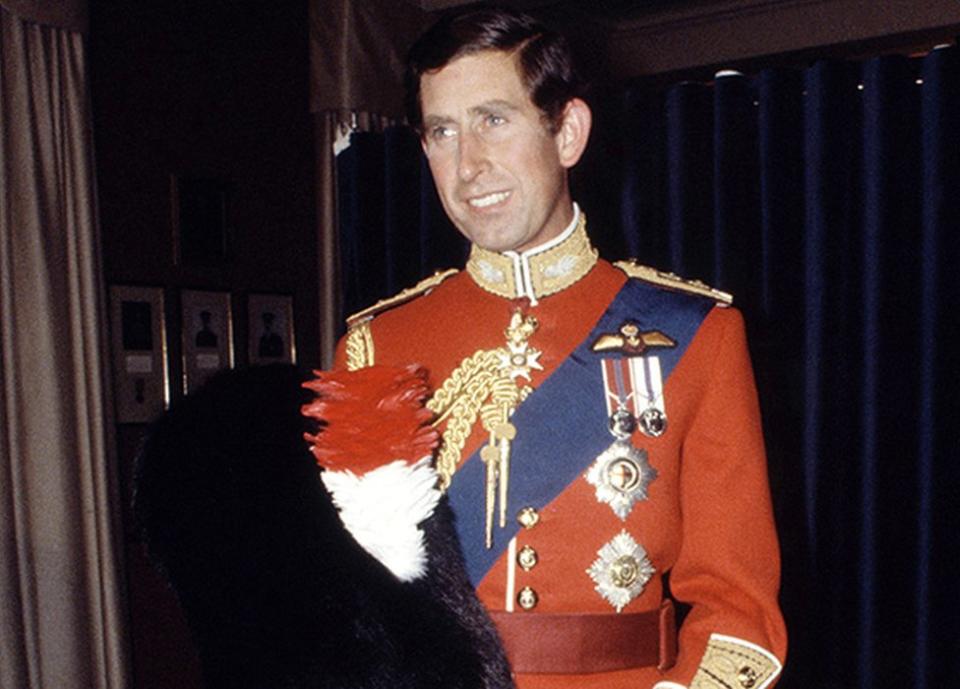
"He stood impressively still, and didn't get distracted like some sitters do."
Yeo won't reveal much of what they talked about during sittings, although he says Charles III has "a great sense of humour" and is a "very engaging person".
His interest in art meant Charles wanted to discuss the process of creating the work and the brushes being used. They also talked about "how he'd learned to paint and about some of the pictures on the walls".
But Yeo says "there's a sanctity to the portrait process". Your sitters "need to believe what goes on is between the two of you because that way I think they feel more comfortable about opening up".
Royal portraits in the past have had an important role to play in signifying power and projecting an image. They were part of the tools used to ensure the survival of the monarch. Some of the most memorable include Henry VIII by Hans Holbein the Younger. The Tudor king employed Holbein as court artist, although only two portraits survive.
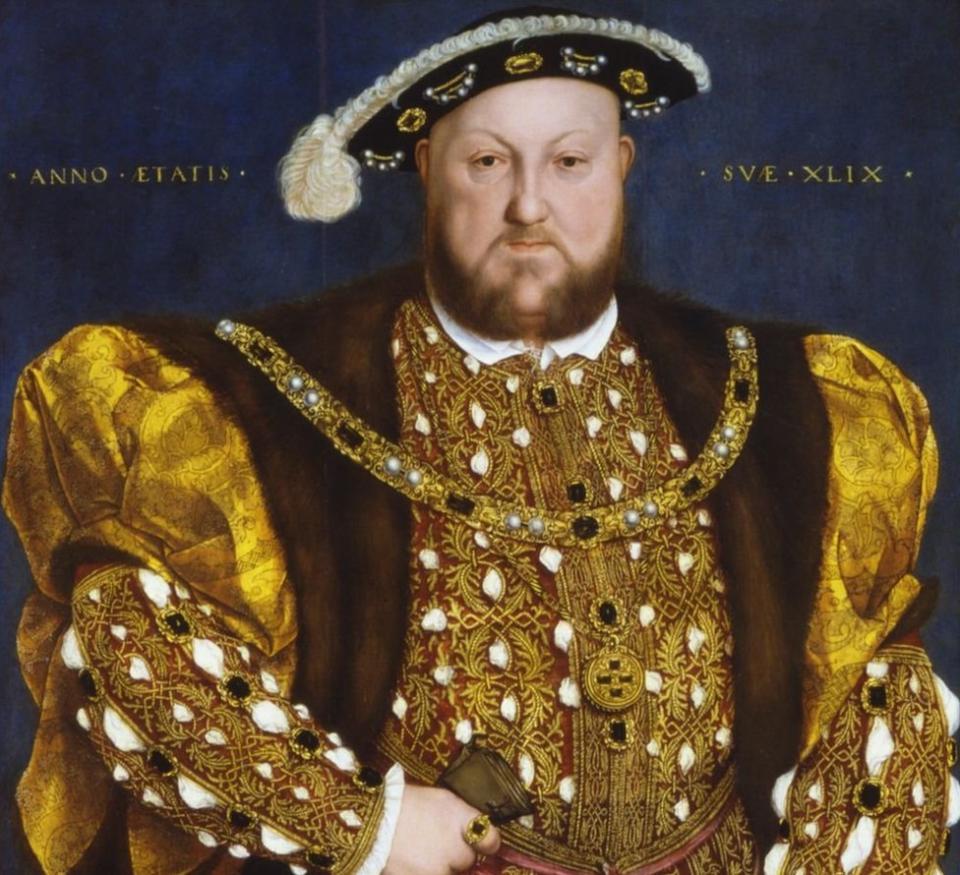
But Yeo says our relationship with royalty has shifted since those days.
"On the one hand, we know they're real people with quirks and personality traits. We've seen that much more of them. On the other hand, we still want to buy into the mysticism and the fairy tale that they're different from us, that there's a bit of magic there."
In his portrait, he was "trying to figure out how to do both at once".
Painting a portrait of this size was "quite an operation", says Yeo. Having used his first sittings with the king for photographs and sketches, he did most of the painting between the third and fourth sittings.
He then had to hire a truck to transport the canvas and his equipment to Clarence House for the last time he saw the King.
As well as easel, painting tables and lighting, they had to "cover all the carpets in sheets so we didn't damage these priceless carpets".
Yeo also brought "a dias, a sort of platform, for me to stand on so I was up high enough to paint his face and one for him to stand on so that he's on a level as well".
The artist claims not to have been interested in getting involved in the "rigid formality" of royal portraiture previously. But as he turned 50, he began to think about how "you have to see how you measure up against the works of the past".
The portrait was commissioned by the Drapers' Company, the City of London livery company which has been collecting royal portraits for centuries.
His painting will go up in Drapers' Hall in London surrounded by "a dozen other fabulous, similarly huge portraits of Queen Victoria and various other kings and queens".
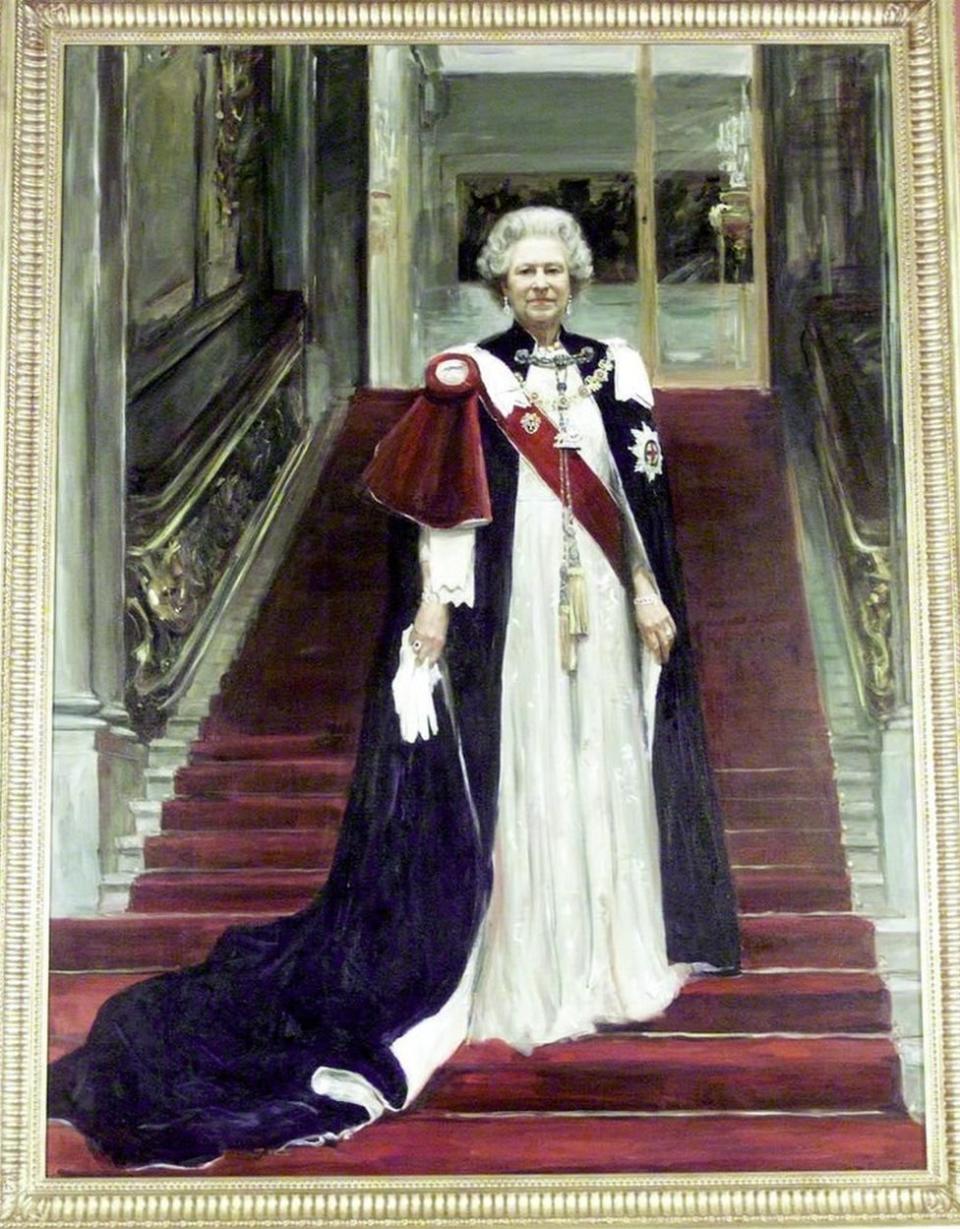
For him, painting Charles III was different from most previous commissions, where you start from scratch.
"All my life I'd known who he was and what he looked like so it was really just a case of deciding what to show and trying to slightly channel who he seems to be now."
He deliberately minimized the visual distractions in his portrait to "allow people to connect with the human being underneath".
There's a great deal of sympathy for the King, Yeo adds. The portrait "reflects exactly who he is, everything he represents and what he's been through".
The portrait will go on public display at the Philip Mould Gallery in London from 16 May until 14 June. It will be displayed at Drapers' Hall from the end of August.

